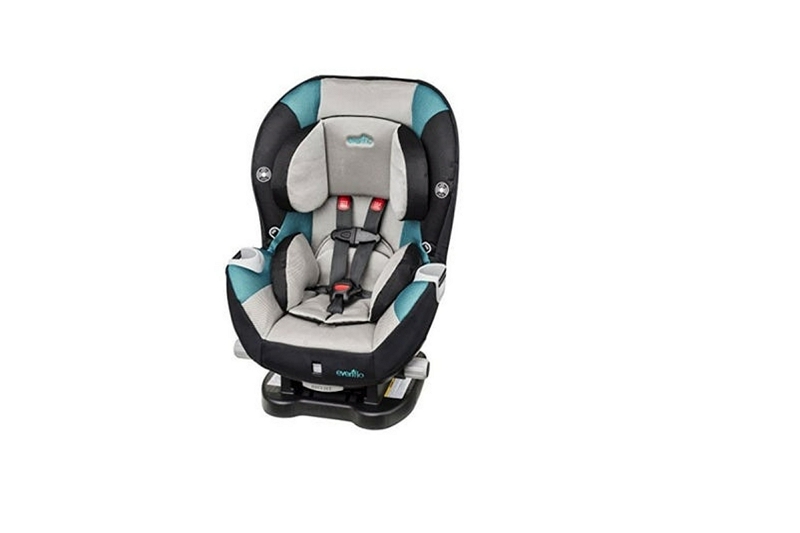When can baby use convertible car seat? A baby can use a convertible car seat when they are born and weigh at least 40 pounds.
The American Academy of Pediatrics recommends that you start using the convertible car seat in the rear-facing position until your baby is two years old or reaches the maximum height/weight limit allowed by your particular model, whichever comes first.

Car seats should be replaced after five years from their date of manufacture to ensure safety for children due to possible changes in technology which may provide less protection against injury during an accident than older models.
If any parts are damaged on the car seat it automatically expires even if there are no signs of damage externally as well as if it was involved in a crash regardless of whether there were visible signs or not because the integrity could have been compromised by unseen forces.
What size car seat should my child be in?
A child should remain in a rear-facing car seat for as long as possible. Children under the age of two years old are five times safer facing backwards than forwards in moving vehicles, according to Kids’ Safe and Smart Travels (KSS).
While children outgrow their infant carrier at 20 pounds or nine months, they can stay in an RF convertible until 40 pounds or four years old. A good rule of thumb is that when your child reaches the height limit allowed by the manufacturer on his current car seat, it’s time to check into another one.
How do I choose the right car seat for my toddler?
Every car seat is different. Some are safe, while others may put your child in danger! It’s important to know how to choose the right one for you and your little ones before getting into that driver’s seat! Things to keep in mind when choosing a car seat for a toddler:
– Height and weight limits of car seat
– Your child’s age, size, and temperament
– Where you would like to use the car seat
– Whether you will be using a stroller and/or baby carrier with the car seat
– How long your child typically sits in a car seat during travel time (not at home)
– Whether or not you want to use an infant car seat vs. a convertible car seat for newborns
– Ease of installation and removal from the vehicle, base, stroller frame, etc.
– Cost
What is the safest car seat on the market?
Several car seats on the market claim to be safe, but you must take into consideration your child’s height and weight. There also needs to be a booster option for older children.
The best brands will have safety ratings from NHTSA (National Highway Traffic Safety Administration) or IIHS (Insurance Institute of Highway Safety).
When choosing between two similar products, then the safest is always the one with higher safety ratings because it has undergone more rigorous testing than its competitor.
To simplify things even further, we can say that all Britax brand car seats are top-rated by every organization in existence today; they dominate this category! If you want peace of mind knowing your baby is strapped in safely while riding around town, then you’ll want to choose Britax first.
What is a combination car seat?
A combination car seat is a car seat that can be used to adapt as your child grows. Often, it includes both rear-facing mode and front-facing mode for use by infants or small children, respectively. As the child gets older, they can change between modes without having to buy new equipment.
This means you only have one extra purchase on top of what was necessary for their infant years! Typically, these seats include an adjustable width so that you don’t need two separate products.
What means Isofix?
The Isofix child seat fixing system is a standard that was created in the 1980s by a group of European car manufacturers looking to improve on previous standards.
In 1985, it became an official ISO international standard and has been mandatory in all cars sold across Europe since 2003, with some exceptions such as convertibles or vehicles manufactured before 1994 which may not be compatible for technical reasons.
What is the difference between rear-facing and convertible car seats?
There are many types of car safety seats. The first type is a rear-facing seat, also referred to as infant carriers or baby capsules. These should only be used for babies who weigh less than 20 pounds and/or measure below 29 inches in height (height limit can vary by model).
While this type looks like an oversized version of the ones you use at home, they’re designed specifically for travel with your little one(s) inside them.
They attach directly into the vehicle via either LATCH anchors or the lower part of the seat belt; both methods ensure that it fits securely and doesn’t move around while driving.
Rear-facing seats must face toward the backseat until your child reaches age two because head support isn’t yet strong enough to prevent potentially devastating injuries in the event of a crash; children continue to face the rear until they outgrow this seat.
What is a convertible car seat?
Convertible car seats are a great alternative to infant car seats, as they can be used from birth up until the child weighs 50 pounds. This means that you have one less thing to worry about when your baby is born and it also saves money in the long haul!
Convertible car seat features include five-point safety harnesses, removable head support pads for comfort, adjustable base systems for correct positioning of the occupant, quick release connectors on straps for easy removal of your little one if need be.
Some convertible car seats even come with cup holders or storage compartments to keep essentials at hand.
